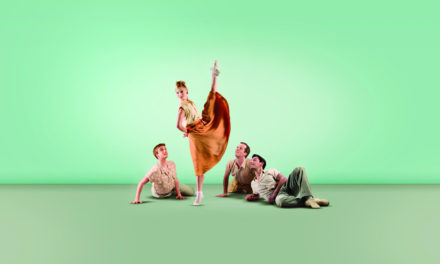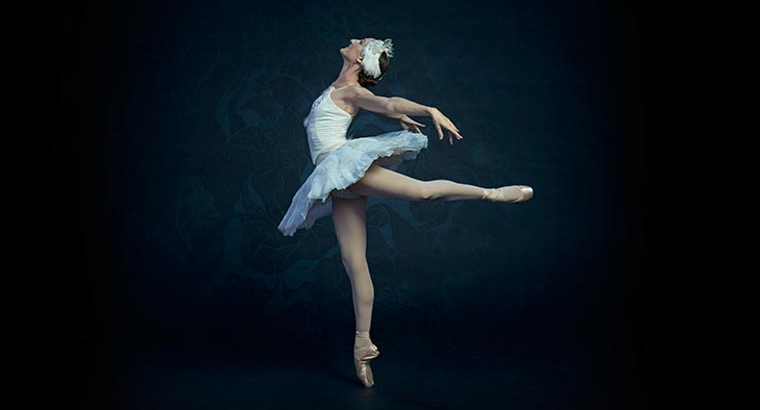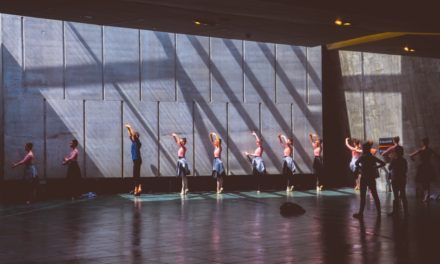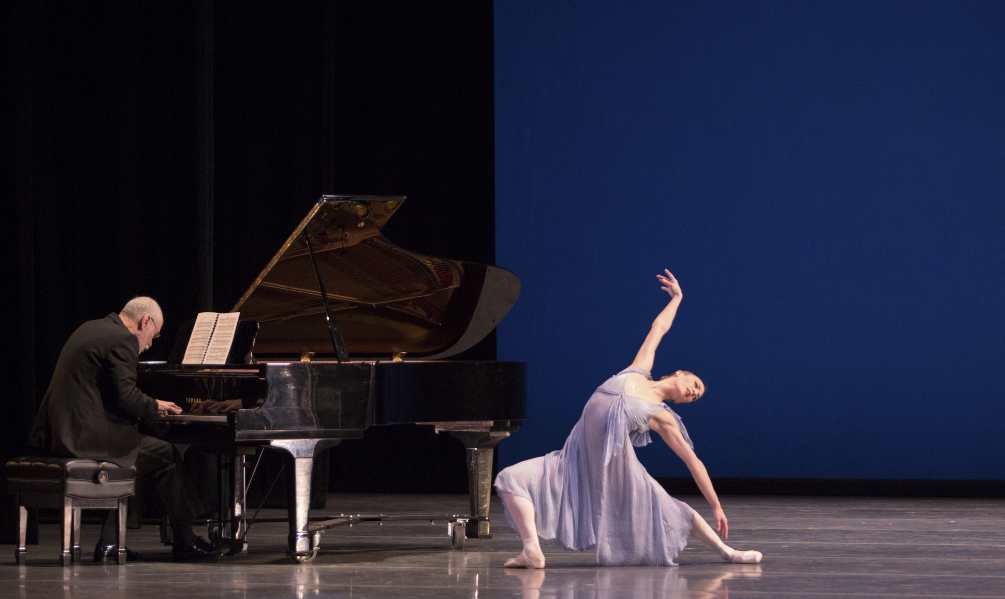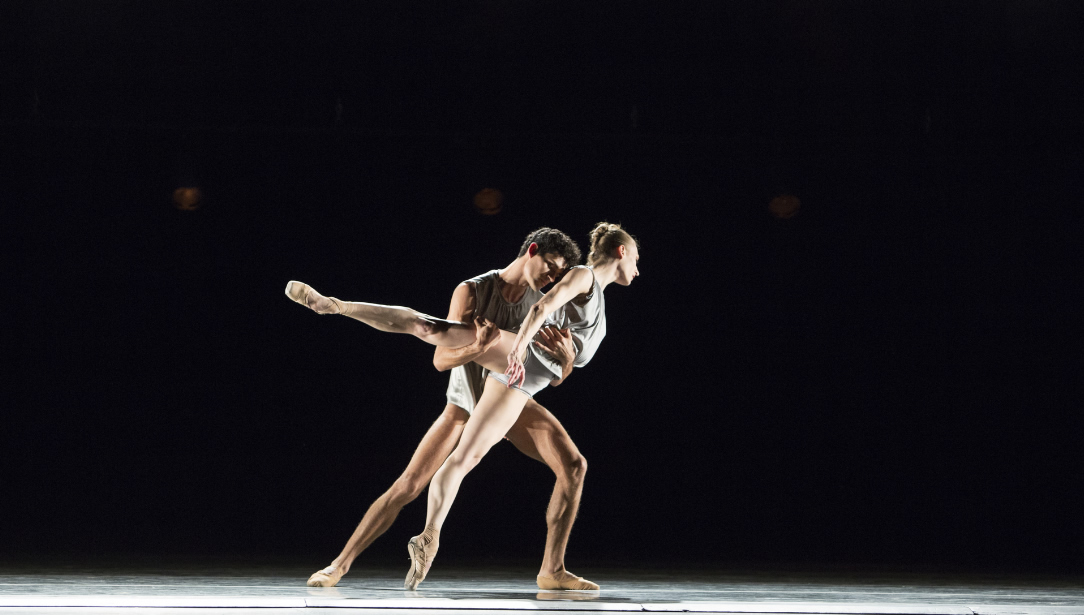
Photo © Alexander Iziliaev for the Miami City Ballet
World Premieres are often anti-climactic affairs, debuting works of dance or music that few will remember a year later, let alone 20 years down the road. This is not the case with One Line Drawn, a work of exquisite poignancy choreographed by Brian Brooks with original music by Michael Gordon. It was the second part of the three-piece program by the Miami City Ballet. The evening at the Arsht Center I attended was also the premiere of the Miami City Ballet’s Third Program of the 2017-2018 season.
I am beginning with One Line Drawn because it is a work of contemporary dance so singular in its poignancy and so fraught with musicality that one cannot help but be moved, if not shaken to one’s core by the experience of witnessing the lovely and sleek performance by one of the premiere ballet companies in the country.
One Line Drawn is an ensemble piece of emotional depth that transfigures dance from movement to drama and back again, all the while Mr. Gordon’s piece – performed lovingly by the Opus One orchestra led by Gary Sheldon – mesmerized me with its thrusting strings and wave-like crests of warm rhythms. Performed in shimmering and loose-fitting blouses and tights shorts that reflected light and resembled a futuristical science fiction set piece akin to the launch pad in Fellini’s 8 1/2 and a minimalist stage set opaquely in black, One Line Drawn managed to excel as both contemporary dance and classical ballet without truly embracing either genre. If genre is a trickster done in by the pluralism of the postmodern in the 21st century, it’s shadow still looms over dance and music.
In fact, it was Lourdez Lopez herself, the artistic director of Miami City Ballet, who introduced the evening’s performances by saying “We are not a museum and while we pay homage to the choreographers of the past it is important that we look to the future and perform challenging new works.”
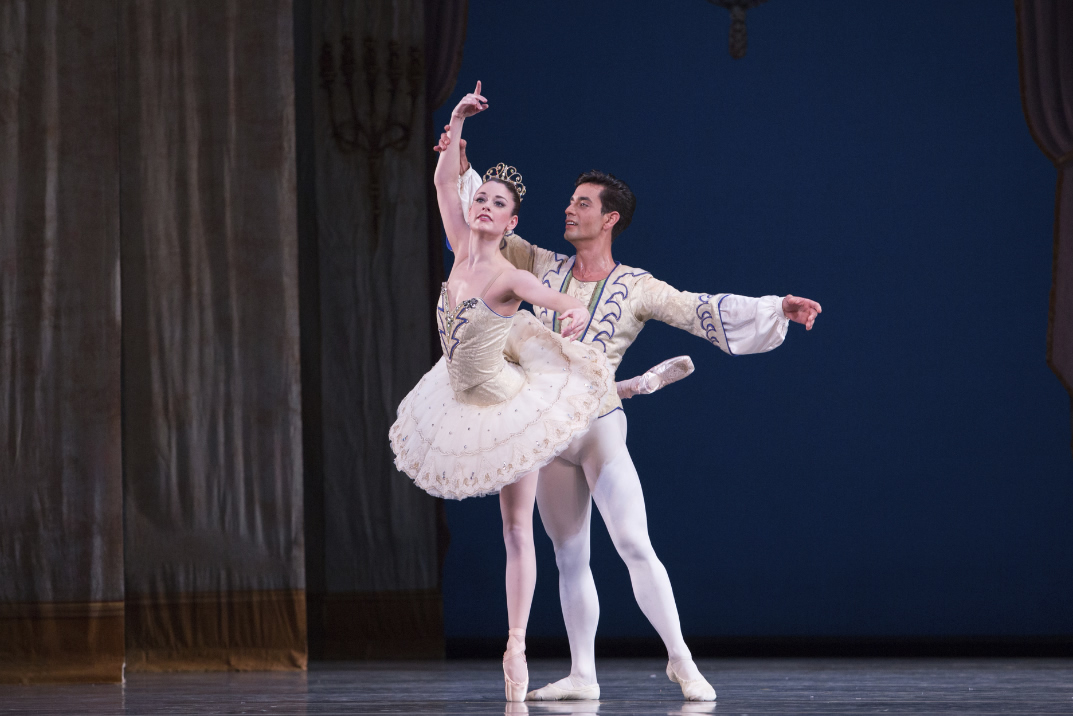
Photo © Alexander Iziliaev for the Miami City Ballet
Challenging it was. Unforgettable too. In its ambition and in it’s partnering with Mr. Gordon’s score, the work declared a challenge to the audience: Ballet will evolve and contemporary dance may transcend our expectations while holding on to classical movements for dear life and out of respect. The fusion of the past with the future made for a spectacularly ambitious triumph that brought the house to its feet.
The first piece of the evening’s three-part program, Theme and Variations by Georges Balanchine with music by Tchaikovsky declared decadence and transcendence with pride and joy. Jennifer Lauren and Kleber Rebellow were especially strong in their characterizations, all of which took place in a richly-flowing light blue backdrop with gold fringe and a uniqe trompe l’oeil effect with a golden chandelier. The entire performance would not have been out of place in Czarist Russia or the current White House Christmas celebrations, such was its ornate and over-the-top embrace of spectacle, all of which provided a strange and stark counterpoint to One Line Drawn which was to follow. “Themes and Variations” is a phrase used sparingly, if at all in English but is quite common in French. It has many generic references and is often used to convey nothing in particular while trying to sound meaningful and important. With regards to the dance piece performed on this important evening, it was almost an under-stated title unlike the breathy spectacle witnessed by the adoring crowd.
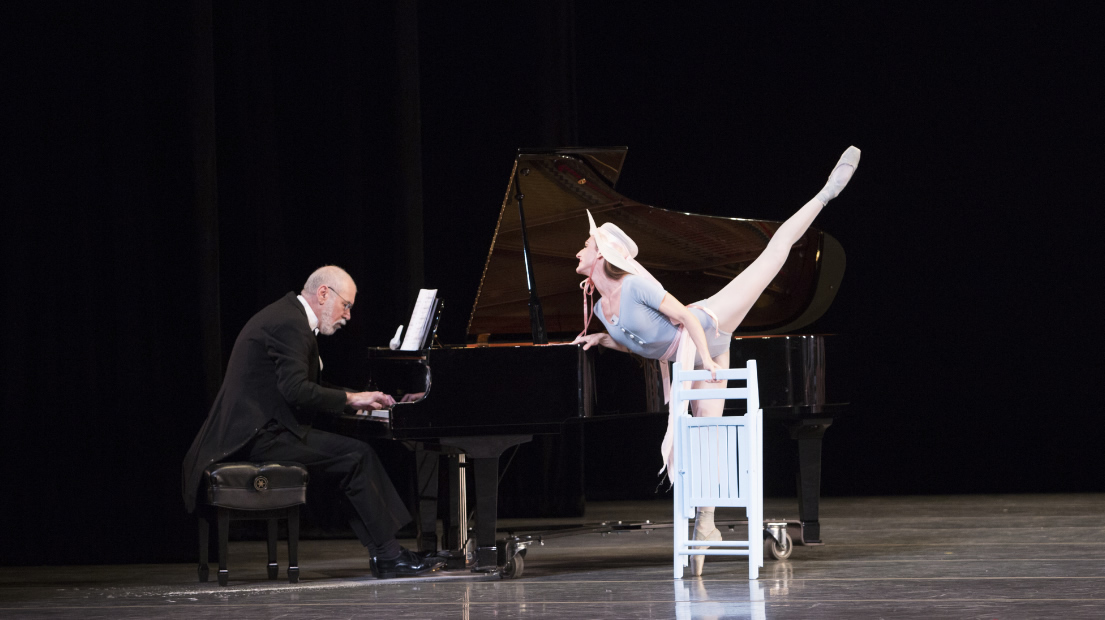
Photo © Alexander Iziliaev for the Miami City Ballet
The evening concluded with The Concert (or, the Perils of Everybody) by Jerome Robbins. Humorous and silly from the start, the piece evolved into a theatrical, almost Vaudevillian dance number that began with the pianist Francisco Renno’s modestly humoristical theatrics to begin the performance. His towering presence on stage next to the dancers, dressed in quasi-sixties space blue outfits and resembling jet-set stewardesses in a dreamy or horrific one-way Pan Am flight to the subconscious of Howard Hughes, made for an odd and strangely challenging juxtaposition whose mood threatened to undermine the grace and power of the dancers.
It was typical Jerome Robbins: sassy, strange, moderately homo-erotic and farcical.
Overall the Miami City Ballet’s execution of Program Three left me delighted, even if I still had a few questions: Why the odd pairings of styles and sensibilities (Robbins, Balanchine and Brooks)? When do genres and stylistic consistencies matter? When does classical ballet cross over into modern and contemporary dance?
That the Miami City Ballet is one of the best company’s working in North America today is without question. I applaud the company for its bravery, its boldness and for the precision of its performances. Their third program of this season is not to be missed.
